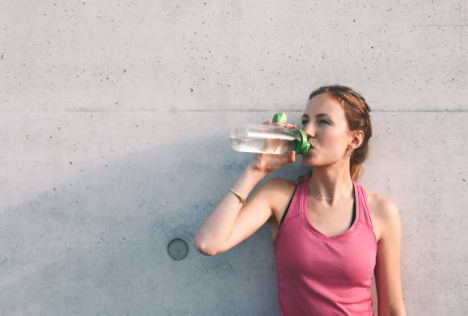When it comes to staying hydrated while working out, it’s not just about quenching thirst—it’s about fueling your body and preventing dehydration. Whether you reach for water, a sports drink, or chocolate milk, the goal is to replace lost fluids and electrolytes and support recovery.
Over 60% of your body is made up of water, and during exercise, you can lose a significant amount through sweat. Hydration supports joint and tissue function, regulates body temperature, and helps transport nutrients throughout the body.
1. Choose the Right Beverage
Sometimes the simplest choice is the best. For most people, plain water is enough to rehydrate after a typical workout.
If you’re doing a high-intensity session lasting more than three hours, chocolate milk might be a better option. It contains sodium and calcium, which you lose through sweat, plus carbohydrates for energy and protein to repair muscle tissue.
Note: Some people find milk hard to digest during exercise, so chocolate milk is best as a post-workout recovery drink, not something to sip mid-run.
Not into water or milk? Sports drinks, coconut water, or other beverages can also help. You can also get electrolytes from food sources like avocados, bananas, orange juice, and tofu—all of which help balance fluids and blood pH levels.

2. Drink the Right Amount
There’s no one-size-fits-all rule for how much water you should drink while working out.
You can estimate your sweat rate by weighing yourself before and after a workout and doing some simple math.
If you’re losing about 1 quart (roughly 3 liters) per hour, aim to drink about 8 ounces (roughly 237 ml) every 15 minutes during your session.
Don’t want to do the math? A good general guideline is to drink 4–8 ounces (120–240 ml) every 15–20 minutes, especially if you sweat a lot.
3. Don’t Overdo It
Yes, you can drink too much water, although it’s rare. Endurance athletes in marathons or triathlons are most at risk.
Drinking excessive fluids without enough sodium can lead to hyponatremia, a potentially life-threatening condition where sodium levels drop too low in the blood—even if you’re drinking a sports drink.
4. Hydrate Before and During Exercise
Start hydrating well before your workout, especially if you’re planning intense or long-duration activity. For example, if you’re prepping for a marathon, start drinking water 1.5 to 2 hours before the race.
Sipping water during exercise is also crucial. Many people don’t drink enough while exercising and feel terrible afterward because of it. Try to stay ahead of dehydration, rather than playing catch-up.
5. Add Protein and Carbs When Needed
While exercise benefits your body, it also causes minor muscle tissue damage, which is totally normal. Protein helps repair that damage, so after intense workouts, consider a drink that contains both fluids and protein.
You also burn through a lot of energy while exercising. You typically need about three times more carbohydrates than protein for proper recovery. That’s why flavored milk (like chocolate milk) can be a great choice—it hits all the recovery essentials: hydration, carbs, and protein.
6. Know the Risks of Dehydration
Not drinking enough water can cause serious problems. Fatigue is the most common symptom, as your blood thickens and your heart has to work harder to pump it, leaving you drained.
Other signs of dehydration include:
-
Confusion
-
Fainting
-
Little to no urination
-
Shock
-
Fast heartbeat (tachycardia)
-
Rapid breathing
Exercise has incredible benefits, but dehydration is one of the biggest downsides if you’re not careful. Staying hydrated is key—especially when you’re physically active.
Knowing how much to drink, when to drink, and what to drink can make a huge difference in your performance and recovery.